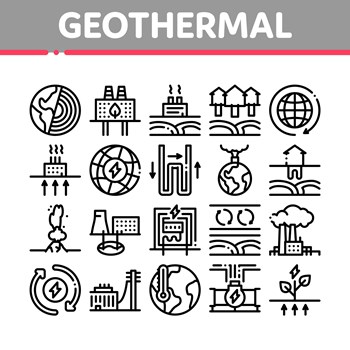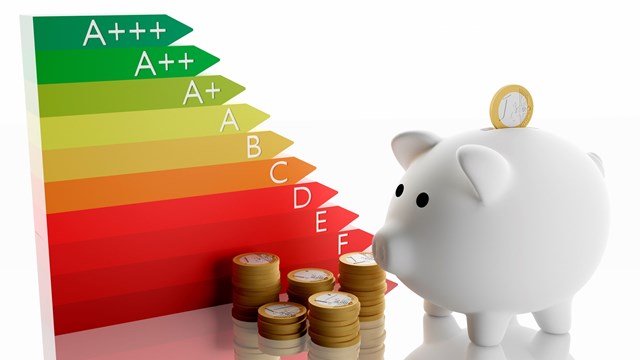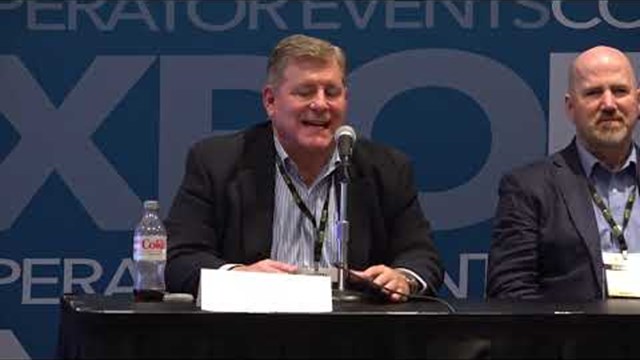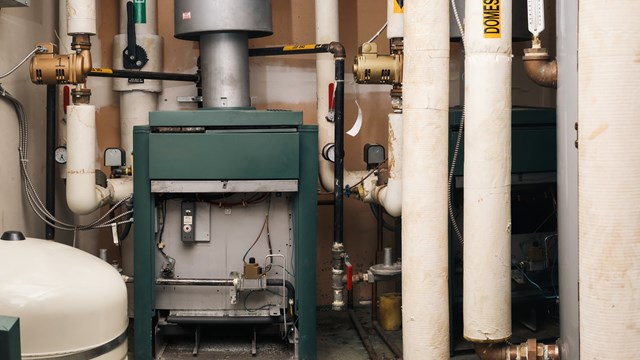
As New York City buildings strive to reduce their carbon footprints to comply with Local Law 97 limits—as well as to improve energy efficiency, reduce costs, and do their part to save the planet from climate catastrophe—an option gaining traction in the real estate sector is geothermal technology - the use of heat from the earth’s interior to provide heating and even cooling to buildings.
Commercial Observer reports that new players in proptech are developing ways to make conversion to geothermal cheaper, more accessible, and less disruptive.
“Geo-Piles”
Proptech entrepreneur Andrew Lee is CEO and co-founder of Toronto-based Innovia GEO, a three-year-old startup in the geothermal space that focuses on “developing innovative solutions to reduce the cost of installing a clean and efficient geothermal system, with the objective of increasing the adoption of clean and renewable geothermal,” says Lee. He contends that depending on the electricity and natural gas prices in a market, the operational energy cost savings of geothermal can be 20% to 60% over a conventional heating and cooling system. Innovia GEO has targeted cutting the “payback window” for recovering the costs of geothermal from 10 years to less than five, putting the system in line with ROI figures for both solar and wind conversions.
According to Lee, one of the barriers is the cost and disruption necessary in the drilling and installing of the geothermal ground heat exchangers using conventional drilling methods. To solve that issue, Innovia GEO is collaborating with Seth Dworkin of Ryerson University in Toronto to develop “Geo-Piles”—steel foundation piles with geothermal functionality already integrated, removing the need for additional drilling. (Alternatively, Lee adds, builders can get 60% of the geothermal energy from the existing foundation and only have to drill 40% of holes in the ground.)
“Geo as a Service”
Another company supporting geothermal uptake is Brightcore Energy, an advisor and funding provider for clean and renewable energy based in New York City. Its “Geo as a Service” provides 100% of the upfront capital for conversion to geothermal in a building’s retrofit or new construction; the client then pays an annual operational fee for the thermal energy system.
Commercial Observer reports that later this year, Brightcore expects to start drilling for geothermal conversion in the basement of The Beresford—the landmark Emery Roth-designed, 23-floor, 175-unit co-op at 211 Central Park West. Partnering with Sweden-based sustainable drilling company LKAB Wassara, Brightcore will use what it calls “Urban Geo”—a 10-foot-high drill rig that can operate in small spaces, according to chief sales officer Mark Liston.
“In this case, it’s an area where old fuel tanks used to be,” Liston says. “We are able to bring our drill rig into the existing space and use the water-down-the-hole-hammer [method], which allows us to drill in an existing building without creating the kind of vibration, dust, dirt, and debris that is associated with conventional geothermal drilling.”
According to a Brightcore case study, the project utilizes inclined geothermal boreholes to extend the hole depth from a small footprint, capturing a greater thermal mass. The boreholes can store heat or cold, maximizing seasonal performance and peak-demand energy reduction. The result will be the complete conversion of The Beresford’s HVAC from fuel oil-based to geothermal by the first quarter of 2022, with full operation by the start of June.
Liston says the geothermal conversion is projected to reduce peak cooling demand by 18% and to provide heating using 60% less energy than an equivalent air source heat pump system. Moreover, The Beresford will be reducing its greenhouse gas emissions by more than 40%.
Geo Economy
Liston explains that Brightcore’s funding model is made possible in part by the incentives and support provided by utilities and state programs. “One of the major enablers from an economic standpoint is the ConEd incentives, which are really strong,” he explains. “ConEd incentives have gone up by 33% this year from what were good incentives before. If you’re in Westchester County, where 70% of the county has a gas moratorium, it’s 30% on top of that.”
“In addition,” Liston continues, “the New York State Energy Research and Development Authority (NYSERDA) has community heat pump programs, where they’re actually also providing funds for feasibility studies and costs of construction. So, those two things in tandem, as well as the general desire to move away from fossil fuel, are really driving the economics.”
The Beresford conversion got a boost when Brightcore was awarded a $500,000 grant from NYSERDA for innovative HVAC technology that enables thermal energy storage for building applications, says Liston.
According to Bill Nowak, executive director of the New York Geothermal Energy Organization, a trade group that includes installers, manufacturers, distributors, and drillers across the state, New York State is a leader in promoting greenhouse gas reduction and provides a number of financial incentives toward reaching its goal - but he says the state can and should do better.
“We are in the process of trying to meet statewide mandated targets of a 40% reduction in greenhouse gases by 2030,” says Nowak, and geothermal is “a key technology toward meeting that goal. We do have a federal tax credit at this point. And we do have state rebates - and in some cases, those rebates are quite lucrative when you go to where ConEd is working in gas-constrained areas.” But, he adds, “We have yet to get the state tax credit or the state sales tax exemption. Those are a couple of the things we’re going to be looking at for this next legislative session.”









Leave a Comment